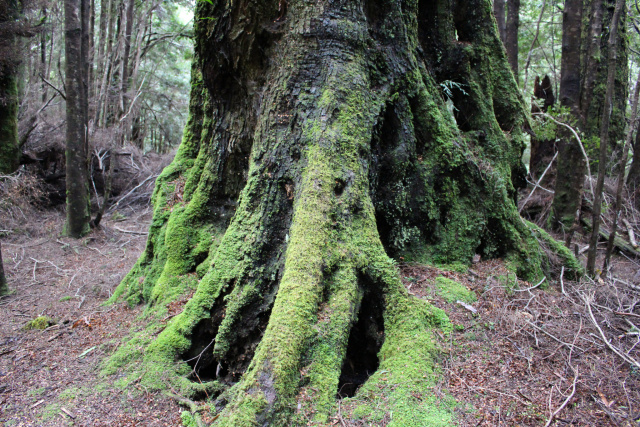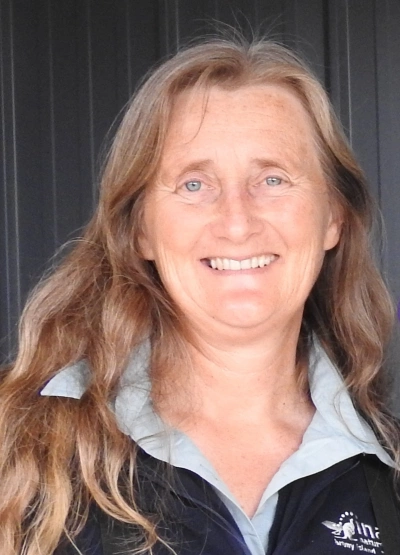Kew Gardens and Inala team up for ancient Gondwanic species
Gondwana was an ancient supercontinent that was around until about the Jurassic period (199 million to 144 million years ago). So when dinosaurs were romping around, Gondwana, this ancient supercontinent, broke up. Continents are changing all the time because they're moving round on their little crustal plates. Australia, for example, is moving northwards at a rate of about two inches or 50 millimetres a year. So it doesn't take long before the continents are moving around more than what you think they are. We can't feel it, but they are. So Gondwana moved apart, broke up into fragments, and carted bits of their plants and animals with them.
And over time, they evolved into new species. So the Myrtle, our Myrtle, nothofagus, is a prime example of an ancient thing that had an ancestor that was around at the time of Gondwana. Now the southern continents, that once were part of Gondwana, have the equivalent of Myrtle, nothofagus. So South America has 15 species, Australia has three species, New Zealand has five species, and the New Guinea Highlands have a whopping great 15 species as well. So they're also a little fragment of Gondwana that's broken off.
So Tasmania’s myrtle trees, the nothofagus cunninghamii are ancient Gondwanan survivors – part of a group of tree species that has been around for at least 100 million years.

So Tasmania’s myrtle trees, the nothofagus cunninghamii are ancient Gondwanan survivors – part of a group of tree species that has been around for at least 100 million years.
So we've been working on a conservation project to conduct a survey into myrtle wilt on Bruny Island. This is myrtle project is being conducted in collaboration with Kew gardens, in England. Our Myrtle in Tasmania, Myrtle Beach or nothofagus cunninghammii is one of the species that Kew, as the main headquarters of the Global Conservation Consortium for Nothofagus are concerned about.

But myrtle trees in parts of Tasmania are being threatened by a fungus called Myrtle wilt.

Dr Tonia Cochran
Gondwana was an ancient supercontinent that was around until about the Jurassic period (199 million to 144 million years ago). So when dinosaurs were romping around, Gondwana, this ancient supercontinent, broke up. Continents are changing all the time because they're moving round on their little crustal plates. Australia, for example, is moving northwards at a rate of about two inches or 50 millimetres a year. So it doesn't take long before the continents are moving around more than what you think they are. We can't feel it, but they are. So Gondwana moved apart, broke up into fragments, and carted bits of their plants and animals with them.
And over time, they evolved into new species. So the Myrtle, our Myrtle, nothofagus, is a prime example of an ancient thing that had an ancestor that was around at the time of Gondwana. Now the southern continents, that once were part of Gondwana, have the equivalent of Myrtle, nothofagus. So South America has 15 species, Australia has three species, New Zealand has five species, and the New Guinea Highlands have a whopping great 15 species as well. So they're also a little fragment of Gondwana that's broken off.
So Tasmania’s myrtle trees, the nothofagus cunninghamii are ancient Gondwanan survivors – part of a group of tree species that has been around for at least 100 million years.

So Tasmania’s myrtle trees, the nothofagus cunninghamii are ancient Gondwanan survivors – part of a group of tree species that has been around for at least 100 million years.
So we've been working on a conservation project to conduct a survey into myrtle wilt on Bruny Island. This is myrtle project is being conducted in collaboration with Kew gardens, in England. Our Myrtle in Tasmania, Myrtle Beach or nothofagus cunninghammii is one of the species that Kew, as the main headquarters of the Global Conservation Consortium for Nothofagus are concerned about.

But myrtle trees in parts of Tasmania are being threatened by a fungus called Myrtle wilt.
You might like...
Takayna / Tarkine
takayna/Tarkine is the southern Hemisphere's largest temperate rainforest, a vast expanse of wild country encompassing spectacular coastline, wild rivers, mountains, waterfalls and open heathland and plains

Inala Jurassic Garden's Noah's Ark project
Myrtle beech
The Myrtle beech, or simply 'Myrtle' is the dominant species of Tasmania's rainforests. Myrtle trees can grow up to 55m tall, and have a heart-shaped dark green leaf with a tiny serrated edge.

How trees talk to each other | Suzanne Simard
Newsletter
Sign up to keep in touch with articles, updates, events or news from Kuno, your platform for nature
